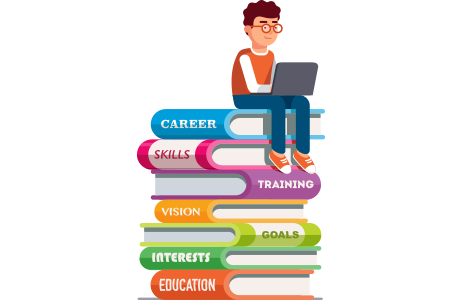
It is important for parents to decide which school their child will attend. This decision affects thousands upon thousands of Indiana children. However, every child is different so what is best for one child might not be right for another. These tips will make the decision simpler. Every child is different, and the school that's best for them may not work for their neighbor.
Private schools
There are thousands of private schools in the country. These schools provide a more personalized education and can be religiously or culturally based. Indianapolis is home to some of the most prestigious private schools in Indiana. Here are some ways to find the perfect private school for you child. It is best to contact the admissions team and request a tour. Ask about transportation options, extracurricular activities, and other details. The list below contains private schools in Indiana and their rankings.

Public schools
Blaine Amendment, which was passed to protect free exercise of religion in America, was adopted. Indiana is among those states that have it. The Constitution guarantees that no state can establish religion for its citizens. Indiana spent 30.8% of its budget on education in fiscal 2013, a figure that was just 0.8% for the previous year. The state provides funding for schools. The entire budget for public schools in Indiana was $11.4 Billion. This number includes both state funding, as well private donations.
Charter schools
Indiana is home to ninety-one private charter schools, with over 40 thousand students. According to The National Alliance for Public Charter Schools, Indiana's 2015-2016 school year saw 91 charter school openings, which accounted for 3.92% of its total public school enrollment. The charter school law, which was approved by Indiana's General Assembly in 2001, was first implemented in 2002. Only tax-exempt nonprofit organizations may apply for a charter. Charter schools can contract with for-profit education providers for a variety of services such as tutoring and professional development.
Not-for-profit schools
Indiana's not-for-profit colleges are not for-profit, but some do. The commission on higher learning oversees both public as well as proprietary institutions. The Indiana Board for Proprietary Education is a seven-member body that authorizes and supervises these schools. It also provides information to parents and students who wish to attend one of these schools.

MBA online programs
There are several benefits to online MBA programs in Indiana. These online MBA programs are a great way to improve your leadership and management skills. The Best Indiana Online MBA Ranking contains 15 of the best schools. These programs are not only useful for providing the tools students need to succeed but they also allow students to expand their networks. An online MBA program is a great way to learn new subject matter, increase your business management skills, foster change, and improve your leadership abilities. An online school must offer strong support to students and faculty.
FAQ
What is the main difference between schooling and college?
Schools are usually divided into classes (or grades), with a teacher who is responsible for teaching a specific class. Colleges are larger institutions that offer more specialized programs and include many university-level courses. Schools usually focus on basic subjects while colleges may offer a variety of subjects including arts, science, languages, business, etc. Both levels offer a variety of subjects to help students prepare for higher level study.
What are the various types of early childhood education available?
There are many ways that early childhood education can be described. The most common are:
-
Preschool - Children ages 2 to 5
-
PreKindergarten: Children 4-6 years old
-
Head Start/ Headstart for children ages 0-3
-
Day Care/ Daycares - Children ages 0 to 5
-
Child Care Centers: Children from 0-18
-
Family Child Care - Children from 0-12 Years of Age
-
Homeschooling – Children from KG up to 16
What is the purpose of schooling or education?
Education should provide students with skills that will help them find work. It is not only an academic pursuit, but also a social activity in which children can learn from each other and gain confidence through participating in sports, music, or art. Education is about learning to think critically and creatively so that students can be self-reliant and independent. What does it mean to have good educational standards?
High educational standards ensure that every pupil achieves their potential. They set clear goals that teachers and pupils work towards. Educational standards should be flexible enough that schools can meet changing needs. A fair and equitable educational system must ensure that all children have equal chances of success no matter their background.
Statistics
- In most developed countries, a high proportion of the population (up to 50%) now enters higher education at some time in their lives. (en.wikipedia.org)
- Think of the rhetorical power of nineteenth-century abolitionist Harriet Beecher Stowe, Martin Luther King, Jr., or Occupy Wall Street activists with their rallying cry of “we are the 99 percent.” (bostonreview.net)
- These institutions can vary according to different contexts.[83] (en.wikipedia.org)
- They are also 25% more likely to graduate from high school and have higher math and reading scores, with fewer behavioral problems,” according to research at the University of Tennessee. (habitatbroward.org)
- They are more likely to graduate high school (25%) and finish college (116%). (habitatbroward.org)
External Links
How To
What is vocational education?
Vocational education prepares students for the workforce after high school. Students are trained in specific skills to be able to do a particular job such as welding. It includes training on the job in apprenticeship programs. Vocational education stands out from general education. This is because it focuses less on general knowledge and more on developing skills for specific occupations. Vocational education's goal is to help students find employment after they graduate.
Vocational education is available at all levels of education, including primary, secondary, high school, college, universities, technical institutes as well as trade schools, community colleges and junior colleges. There are many schools that specialize in specific subjects, such as nursing schools (law schools), medical schools, dental school, veterinary medicine and firefighting schools. Many of these schools offer both academic instruction and practical experiences.
Over the past decade, a number of countries have made substantial investments in vocational education. These include Australia, Denmark and Finland, Germany. However, it is not clear if vocational education is effective. Some critics believe it doesn't help students get hired, while others claim that it helps prepare them for life after high school.
The U.S. Bureau of Labor Statistics has estimated that 47% of American adults hold a postsecondary certificate or degree related to their current occupation. This is a higher percentage among those who have more education. 71% are currently employed in fields that require postsecondary qualifications.
The BLS reported in 2012 that almost half of all adults had some type of postsecondary credential. About one-third of Americans held a two-year associate degree, while about 10 percent held a four-year bachelor's degree. One fifth of Americans have a master's, or doctorate.
The median annual wage for individuals with a bachelor's in 2013 was $50,000. This was compared to $23,800 when they had no degree. The median salary for people with advanced degrees was $81,300.
For those who did no high school, the median salary was only $15,000. Those with less than a high school diploma earned $13,000 per year.